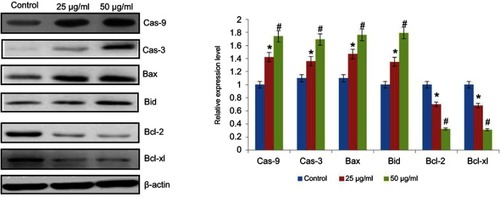Figures & data
Figure 1 The UV–visible spectrum absorption pattern at different time period durations (A) and dynamic light scattering (B) of biosynthesized gold nanoparticles from Chinese medicinal herb Curcuma wenyujin (CWAuNPs).
Abbreviations: PDI, polydispersity index; ST.DEV, standard deviation.
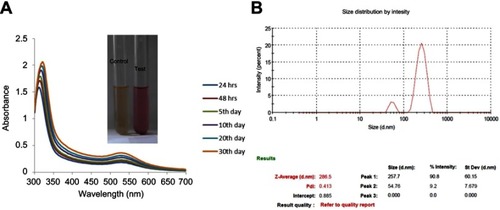
Figure 2 Fourier-transform infrared spectroscopy (A) and selection area diffraction pattern analysis of biosynthesized gold nanoparticles from Chinese medicinal herb Curcuma wenyujin (CWAuNPs).
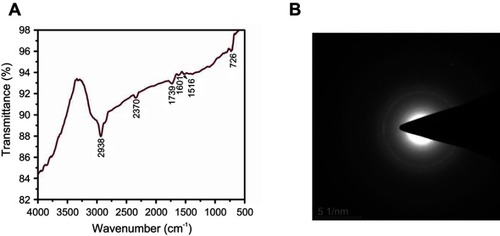
Figure 3 Atomic force microscopy analysis of biosynthesized gold nanoparticles from Chinese medicinal herb Curcuma wenyujin (CWAuNPs).
Abbreviation: nm, nanometer.
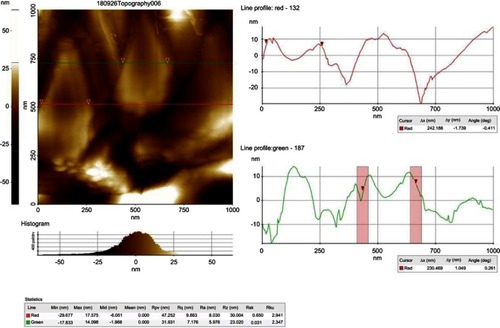
Figure 4 High resolution transmission electron microscopy (TEM) (A) and energy dispersive X-ray analysis (EDAX) (B) of biosynthesized gold nanoparticles from Chinese medicinal herb Curcuma wenyujin (CWAuNPs).
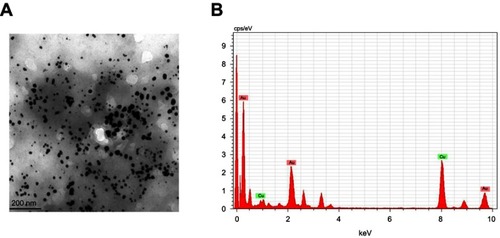
Figure 5 Cytotoxic effects of biosynthesized gold nanoparticle from Chinese medicinal herb Curcuma wenyujin (CWAuNPs) against renal carcinoma cell lines A498 (A) and SW-156 (B). Both A498 and SW-156 cells were treated with six different concentrations of CWAuNPs, ranging from 5–50 µg/ml for 24 hours and assessed for CC50 value with MTT assay. Each bar represents the mean±SEM of three independent observations. p*<0.05 is considered as statistically significant.

Figure 6 Apoptotic effect of biosynthesized gold nanoparticle from Chinese medicinal herb C. wenyujin (CWAuNPs) on ROS induction in renal carcinoma cell line A498. A498 cells were treated with 25 µg/ml and 50 µg/ml of CWAuNPs for 24 hours and after 24 hours of treatment, the control and treated cells were stained with 2’,7’-dichlorodihydrofluoresceindiacetate (H2DCFDA) for 15 minutes. The experiment was performed three times, and the representative images of each group are presented. *P<0.05.
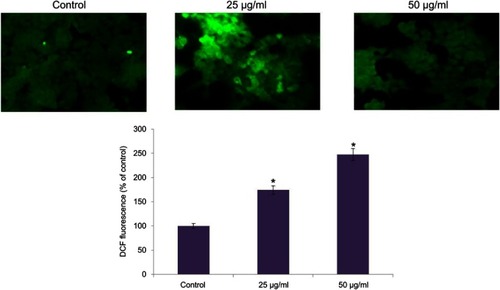
Figure 7 Apoptotic effect of biosynthesized gold nanoparticle from Chinese medicinal herb C. wenyujin (CWAuNPs) on mitochondrial membrane permeability in renal carcinoma cell line A498. A498 cells were treated with 25 µg/ml and 50 µg/ml of CWAuNPs for 24 hours and after 24 hours of treatment, the control and treated cells were stained with 1 mM Rhodamine 123 for 15 minutes. The experiment was performed thrice, and the representative images of each group are presented.
Note: arrow: apoptotic cells.

Figure 8 Apoptotic effect of biosynthesized gold nanoparticle from Chinese medicinal herb C. wenyujin (CWAuNPs) on nuclear morphology of renal carcinoma cell line A498. (A) DAPI staining: A498 cells were treated with 25 µg/ml and 50 µg/ml of CWAuNPs for 24 hours and after 24 hours of treatment, the control and treated cells were stained with 4′,6-diamidino-2-phenylindole dihydrochloride for 5 minutes. The experiment was performed thrice, and the representative images of each group are presented. (B) Flow cytometric analysis with Annexin FITC and Phycoerythrin. A498 cells were treated with 25 µg/ml and 50 µg/ml of CWAuNP’s for 24 hours and after 24 hours of treatment, the control and treated cells were stained with10 µl of PE Annexin V and 5 µl of FITC for 15 minutes in the dark. After incubation, the cells were stained with 5 µl propidium iodide for 5 minutes, and assessed with fluorescence activated cell sorter (FACScan, BD) to detect the apoptotic and necrotic cells.
Note: Arrow: apoptotic cells.
Abbreviations: FITC-Fluorescein isothiocyanate; DAPI -4′,6-diamidino-2-phenylindole.
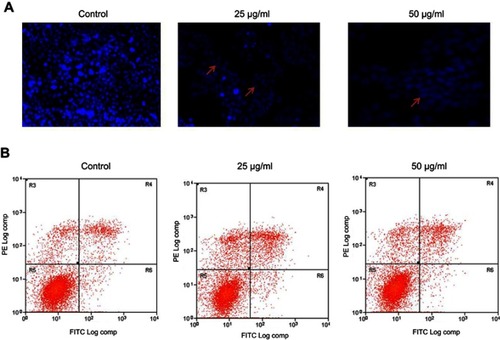
Figure 9 Anticancer effect of biosynthesized gold nanoparticle from Chinese medicinal herb C. wenyujin (CWAuNPs) on apoptotic gene expression in renal carcinoma cell line A498. A498 cells were treated with 25 µg/ml and 50 µg/ml of CWAuNPs for 24 hours and after 24 hours of treatment, the control and treated cells were subjected to total RNA isolation and cDNA conversion. The cDNA of the control and treated groups were subjected to qPCR analysis with specific apoptotic genes Caspase 3, Caspase 9, Bid, Bax, and Bcl-2. Each bar represents the mean±SEM of three independent observations. P<0.05 is considered as statistically significant. *P<0.05; #P<0.01.
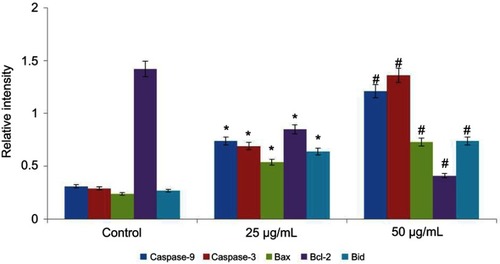
Figure 10 Anticancer effect of biosynthesized gold nanoparticle from Chinese medicinal herb C. wenyujin (CWAuNPs) on apoptotic protein expression in renal carcinoma cell line A498. A498 cells were treated with 25 µg/ml and 50 µg/ml of CWAuNPs for 24 hours and after 24 hours of treatment, the control and treated cells were subjected to total protein isolation. The 50 µg of total protein from the control and treated groups were subjected to electrophoresis and immublotting analysis with specific apoptotic proteins Caspase 3 (Cas-3), Caspase 9 (Cas-9), Bid, Bax, Bcl2, and Bclxl. Each bar represents the mean±SEM of three independent observations. p<0.05 is considered as statistically significant. *p<0.05; #p<0.01.
